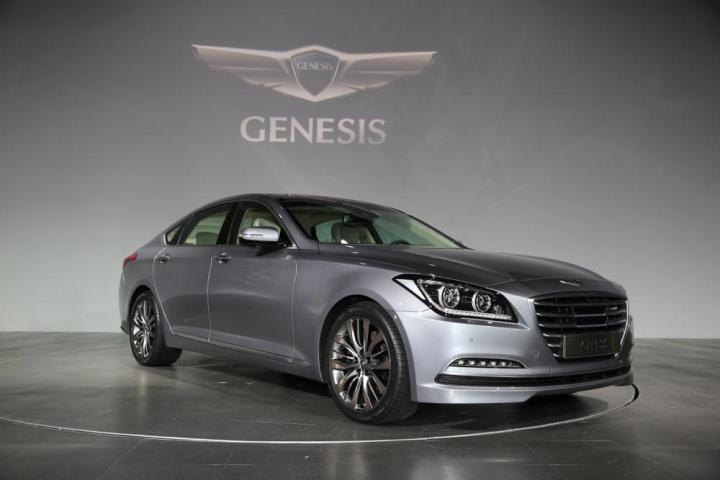
If you’re like me, you’re wondering just exactly people will be doing with their Google Glass that they can’t already do with, say, a smartwatch or a smartphone.
Well, Hyundai has an answer to my conundrum … sort of.
The Korean automaker announced today that it has designed a Glassware app that syncs with the cloud-based Blue Link infotainment system of the 2015 Genesis. The new app “will be presented as cards optimized for the Glass user interface. Push notifications will alert the owner when maintenance is due and allow quick service scheduling by enabling the wearer to initiate a call using the device’s built-in functionality,” according to a Hyundai press release.
The Hyundai Blue Link Glassware app will also allow users to start their Genesis remotely, lock or unlock the doors, or send points of interest from the Glass straight to the car’s onboard infotainment unit.

While the second chunk of this sounds useful, it is just like what people can already do with their smartphones with any number of apps from the globe’s automakers. The first bit, though, the bit about giving you maintenance warnings, sounds like a nightmare.
As we joked here in the Digital Trends office, arrant check engine lights are annoying enough when they’re on the dashboard. Throw it in your face when you’re talking to your kids, though, and you might go berserk.
I’ve even spoken to some automakers who hope to some day offset the cost of these apps with ads from local dealerships. Imagine a dancing monkey ad from Dan’s Hyundai Auto Mall jumping up on your Glass during a big business meeting. You might go trade your Hyundai in immediately. I know I would.
Forgive my curmudgeon-y rant, but I really don’t see the benefit of giving you vehicle error messages in your Glass. Giving you the messages while you’re in the car is not only redundant but also illegal in some states. And giving you warnings while you’re away from the car is useless because you’re, well, nowhere near the car and therefore can’t deal with the issue.
So start your Genesis remotely with you Google Glass? “Sure, why not?” Tell me my Genesis is running low on fuel while I am at the dinner table? “Leave me the hell alone.”


